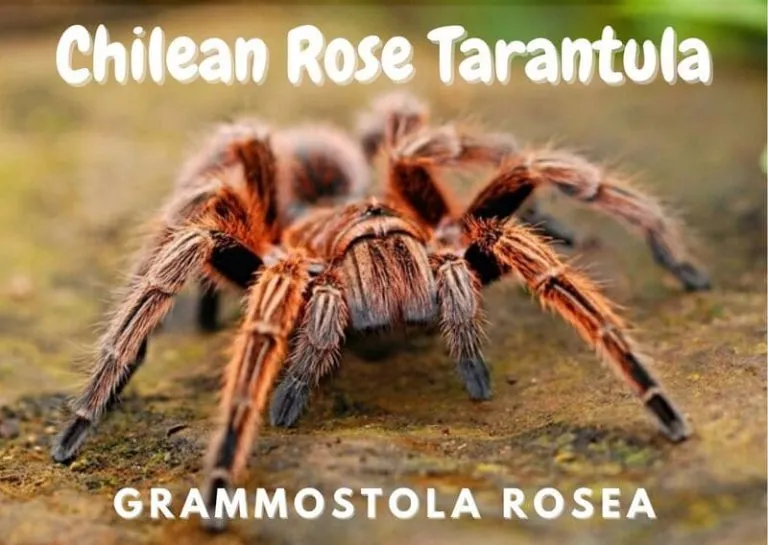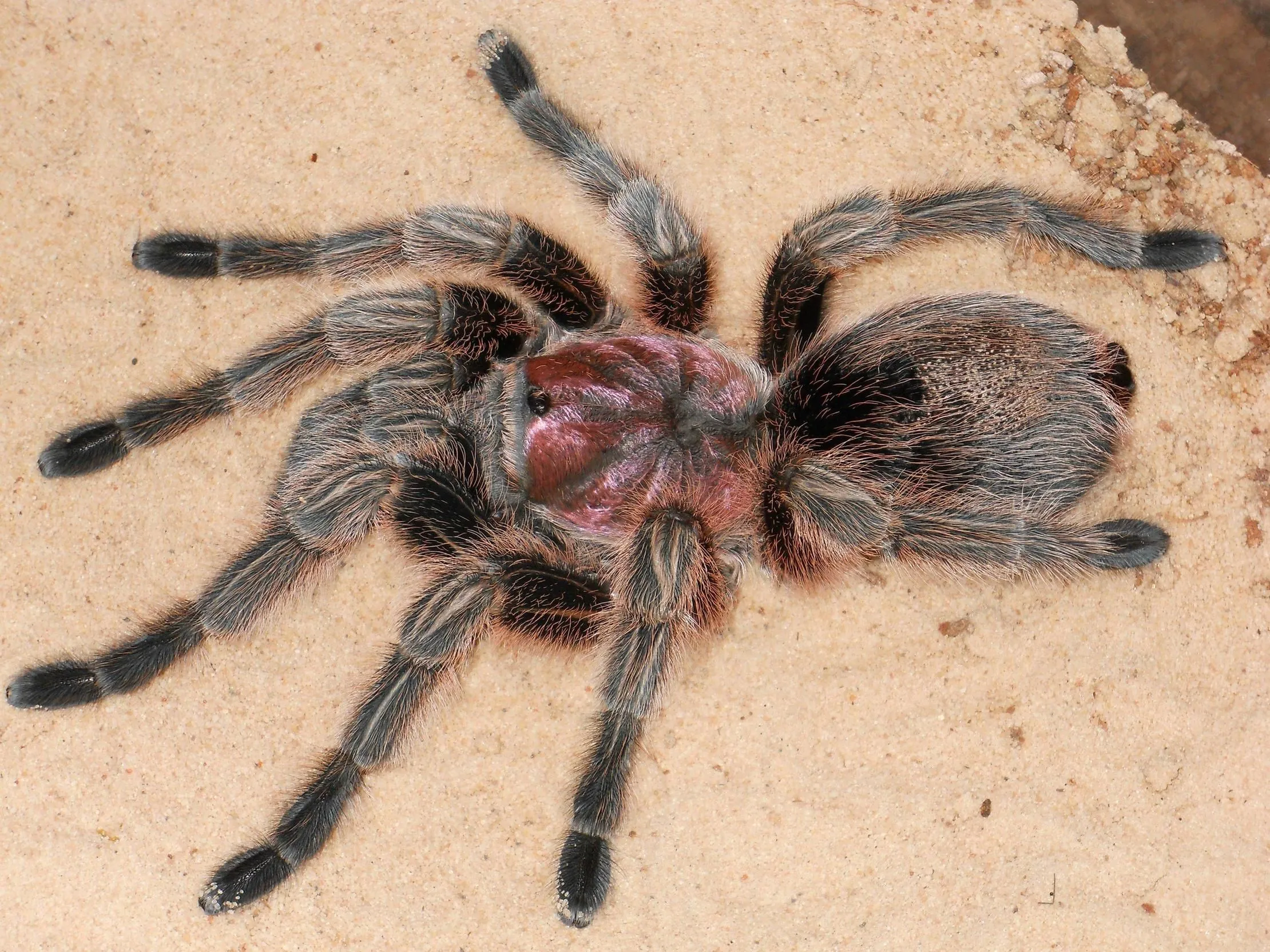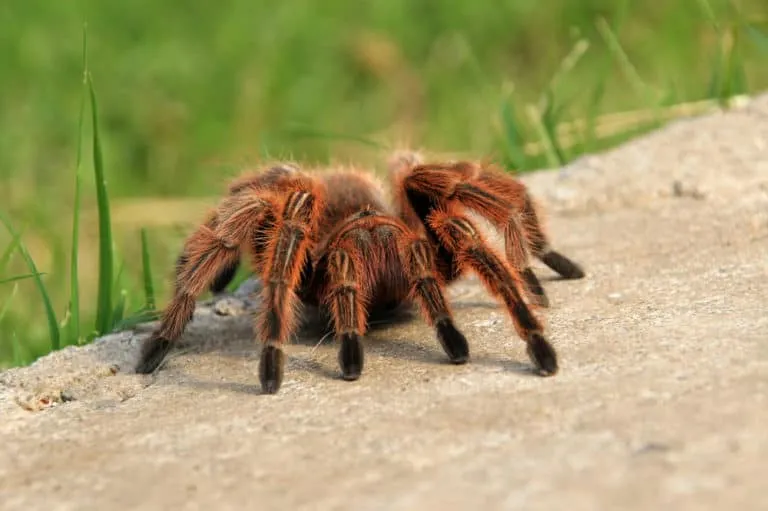Top 5 Facts about Chilean Rose Tarantulas as Pets
The Chilean Rose Tarantula (Grammostola rosea), also known as the Rose Hair Tarantula, is a popular choice for beginner tarantula keepers. Their relatively docile nature, combined with their attractive appearance and manageable care requirements, makes them an excellent introduction to the world of exotic pets. This article will delve into the top five facts about these fascinating creatures, providing you with the essential information needed to understand and care for a Chilean Rose Tarantula. From their physical characteristics and behavior to their habitat needs and health considerations, you’ll gain a comprehensive understanding of what it takes to keep these captivating spiders as pets. This knowledge will help you decide if this unique pet is right for you, and if so, how to provide the best possible care to ensure a long and healthy life for your tarantula. Choosing a pet is a big responsibility, but with the right information, you can be well-prepared to welcome a Chilean Rose Tarantula into your home.
Appearance and Characteristics
Chilean Rose Tarantulas possess several distinct characteristics that contribute to their appeal. Their overall appearance is quite striking, and their docile nature is a significant factor in their popularity as pets. Understanding their physical attributes is crucial for appreciating these creatures and knowing what to expect when you own one. This includes understanding their size, lifespan, coloration, and the various markings that make each tarantula unique. Recognizing these aspects will not only help you identify and admire your pet but also provide a good foundation for ensuring it thrives in your care. Proper identification can aid in recognizing potential health issues and in determining their gender which, in turn, can help you gain a more thorough understanding of your spider’s life stages and behaviors.
Size and Lifespan

One of the first things people notice about the Chilean Rose Tarantula is its size. These tarantulas are considered to be medium-sized, with a leg span that can reach up to 5 to 6 inches. Female Chilean Rose Tarantulas are typically larger than males and have a longer lifespan. Females can live for 15 to 20 years, sometimes even longer, while males tend to live for only 5 to 10 years. This difference in lifespan is an important consideration for any potential owner, as it means a significant long-term commitment. Their growth rate is relatively slow, shedding their exoskeleton periodically as they mature. Understanding their size and lifespan helps in providing an appropriate enclosure and anticipating the long-term responsibilities of owning this pet. For anyone considering a Chilean Rose Tarantula, these two aspects – size and lifespan – are pivotal in planning and care.
Coloration and Markings
The Chilean Rose Tarantula is known for its beautiful coloration, which gives it its common name. They typically have a base color of brown, ranging from light tan to darker shades, with reddish or pinkish hairs that cover their carapace, legs, and abdomen. The intensity of the pink hue can vary from one tarantula to another. Some individuals may have more pronounced pink coloration, while others may appear more brown overall. Additionally, the markings can vary from one tarantula to another, with some displaying subtle patterns on their abdomen. The combination of the base color and the rose-colored hairs gives them a distinctive look that many find aesthetically pleasing. Careful observation of these features can help you appreciate the unique beauty of your pet and also assist in identifying any changes in health or well-being.
Temperament and Behavior
The temperament and behavior of a Chilean Rose Tarantula are important factors to consider if you are thinking about keeping one as a pet. They are generally known for their docile and calm nature, making them a good choice for novice tarantula keepers. However, like any animal, they can exhibit defensive behaviors if they feel threatened or stressed. Understanding their typical behavior, potential triggers for defensive actions, and how to handle them with care is crucial to ensuring a safe and positive experience for both the owner and the tarantula. This information is helpful in creating a suitable environment and interacting with your pet responsibly, as well as in learning to recognize signs of stress or discomfort and how to respond accordingly. Their behavior directly impacts their suitability as pets and their overall well-being.
Docile Nature

One of the most attractive characteristics of the Chilean Rose Tarantula is its generally docile nature. They are not typically aggressive and tend to be more likely to run and hide when startled rather than attack. This calm temperament is a significant advantage, especially for those new to tarantula ownership. Of course, individual personalities can vary, but most individuals are relatively easy to handle, at least in terms of their propensity to bite or display overt aggression. Their docile disposition also makes them less likely to flick urticating hairs, a defense mechanism used by some tarantula species to irritate potential threats. This gentle nature provides a more relaxed experience for keepers who enjoy observing or occasionally handling their pets. This makes the Chilean Rose Tarantula a favorable option for many considering their first tarantula as a pet.
Defensive Behaviors
While Chilean Rose Tarantulas are generally docile, they can exhibit defensive behaviors when they feel threatened or are stressed. This can include raising their front legs, rearing up, and sometimes flicking urticating hairs from their abdomen. Though they are not inclined to bite, they may do so as a last resort. It’s important to be aware of these behaviors and understand the triggers. Overhandling, a poor enclosure setup, loud noises, or rapid movements can all cause stress. Always handle your tarantula gently and avoid sudden movements. Providing a secure and comfortable environment is essential to minimize these behaviors. By recognizing the signs of stress and taking the necessary precautions, you can minimize the risk of defensive actions and ensure that both you and your pet can enjoy a positive relationship. It’s best to observe your tarantula in its environment to see how it reacts to various stimuli before attempting to handle it.
Habitat and Housing
Setting up the right habitat is essential for the health and well-being of your Chilean Rose Tarantula. They are relatively easy to accommodate, but proper housing provides them with security, comfort, and the correct environmental conditions they need to thrive. The enclosure should mimic their natural habitat, providing space to move around, appropriate substrate to burrow in, and decorations to make them feel secure. A well-designed habitat not only enhances the tarantula’s quality of life but also makes it easier for you to observe and care for them. This includes understanding the appropriate size of the enclosure, the best type of substrate, and other decorations that should be used to ensure a comfortable and enriching environment for your pet. Proper housing is a crucial aspect of successful tarantula keeping.
Enclosure Setup

When setting up an enclosure for a Chilean Rose Tarantula, a few key factors are critical. The enclosure should be large enough to allow the tarantula to move around comfortably, but not so large that it makes them feel insecure. A ten-gallon tank is often sufficient for an adult, though larger enclosures can be used. Ventilation is vital; the enclosure needs proper airflow to prevent the buildup of mold and maintain appropriate humidity levels. A secure lid is essential to prevent escape, as tarantulas are skilled climbers. The enclosure should provide a safe, secure environment that minimizes stress and supports their natural behaviors. Glass or acrylic enclosures are suitable choices, and the design should allow for easy access for feeding and cleaning. Consideration should also be given to providing hiding places to help your tarantula feel safe and secure within its habitat. A well-designed enclosure is a fundamental aspect of tarantula care, ensuring your pet’s health and happiness.
Substrate and Decorations
The choice of substrate and decorations is a key part of creating a comfortable and enriching environment for your Chilean Rose Tarantula. The substrate, the material at the bottom of the enclosure, should allow the tarantula to burrow and feel secure. A mixture of peat moss, coconut fiber, and vermiculite is a good option because it retains moisture and provides a naturalistic setting. The substrate should be deep enough for burrowing, usually around 3 to 4 inches. Decorations should also be included to make the tarantula feel at home. Hides, such as cork bark or artificial plants, provide places to hide and retreat when they feel threatened. Water dishes should be shallow to prevent drowning and should always be available. The environment should be set up in a way that mimics the tarantula’s natural habitat, allowing it to display natural behaviors. This careful setup makes the enclosure a safe, enriching, and comfortable place for your pet.
Feeding and Diet
Providing a proper diet is essential for the health and growth of your Chilean Rose Tarantula. These tarantulas are carnivores, meaning their diet should consist of insects. Understanding what to feed them, as well as how often, will ensure your pet receives the necessary nutrients to thrive. The right diet supports their overall health and provides the energy needed for their activities. They are relatively easy to feed and don’t require a complex diet, making them a convenient pet for many. Feeding them appropriately is a key aspect of responsible pet ownership. Ensuring that the nutritional needs of your tarantula are met will help keep them healthy and provide them with a long lifespan.
What to Feed

The primary food source for Chilean Rose Tarantulas consists of live insects. Crickets, mealworms, and roaches are readily available and suitable options. The size of the insects should be appropriate for the size of the tarantula; as a general rule, the prey should be no larger than the tarantula’s body. It’s important to ensure the insects are gut-loaded, meaning they’ve been fed nutritious food prior to being offered to the tarantula, to improve the nutritional value for your pet. You can offer a variety of insects to provide a balanced diet. While it’s less common, some owners occasionally offer small, pre-killed pinky mice, but this should be done sparingly as they can be high in fat and may cause health issues if fed too frequently. Providing a diverse and appropriate diet will ensure your tarantula stays healthy and receives all the nutrients it needs.
Feeding Frequency
Feeding frequency depends on the tarantula’s age and size. Spiderlings and juveniles should be fed more frequently, typically 2–3 times a week. Adult Chilean Rose Tarantulas can be fed less often, often once every 1–2 weeks. The amount of food offered should be adjusted based on how much the tarantula eats. Remove any uneaten insects within 24 hours to prevent them from stressing the tarantula. Always monitor your tarantula’s abdomen; a well-fed tarantula will have a plump abdomen. Adjusting the feeding schedule based on their appetite and physical condition ensures they receive the right amount of nutrition without overfeeding. Proper feeding frequency contributes to your tarantula’s health and longevity.
Health and Care
Like all pets, Chilean Rose Tarantulas require attention to ensure they remain healthy. Regular care includes monitoring for common health issues and providing the appropriate environment to prevent illness. Understanding the signs of potential problems and knowing how to respond is essential for responsible pet ownership. By paying close attention to your tarantula, you can catch and address any issues early. This includes understanding the general health signs that your pet will express and how to address them. Proper care significantly impacts their quality of life and can help them live a long, healthy life. Maintaining optimal health for your tarantula is about more than just feeding, it’s also about creating a supportive and safe environment.
Common Health Issues

While Chilean Rose Tarantulas are relatively hardy, they can still be prone to certain health issues. Common issues include dehydration, which can be prevented by ensuring a clean water source is always available, and mites, which can infest the tarantula or its enclosure. Additionally, infections and injuries can occur if the enclosure is not maintained properly. Look for signs of illness, such as lethargy, loss of appetite, or unusual behavior. Regularly inspect the enclosure for any signs of mites or mold, and clean it as needed. Preventing these issues involves careful observation of the tarantula and its environment, and immediate action if any problems are detected. If you suspect your tarantula is ill, consult with a veterinarian experienced with exotic pets.
Handling and Safety
Handling a Chilean Rose Tarantula should be done with caution. While they are generally docile, they can bite if provoked, and their bite can be painful. Avoid handling your tarantula unless absolutely necessary, such as for enclosure maintenance or health checks. If you do need to handle it, do so carefully, and be aware of its potential reactions. It’s also important to remember that tarantulas can be fragile; a fall from a height can be fatal. The best approach is to handle them at a low level, such as while seated on the floor. Wash your hands thoroughly before and after handling your tarantula to prevent the spread of any potential pathogens. Remember that safety for both you and the tarantula should always be a top priority, so always be mindful and respectful of your pet’s needs and natural behaviors. Handling should be minimized to reduce the risk of stress or injury for the tarantula.
In conclusion, the Chilean Rose Tarantula is a fascinating and rewarding pet for those who are prepared to meet its specific needs. Their calm temperament, coupled with their beautiful appearance and manageable care requirements, makes them a great choice for beginners. By understanding their characteristics, providing an appropriate habitat, offering a proper diet, and paying attention to their health, you can ensure a long and fulfilling life for your pet tarantula. From the vibrant coloration to their unique personalities, these spiders offer a captivating experience for any pet owner. Responsible ownership and a commitment to their well-being are essential for anyone considering adding a Chilean Rose Tarantula to their home. With proper care and attention, you can enjoy the unique companionship of these amazing creatures.
